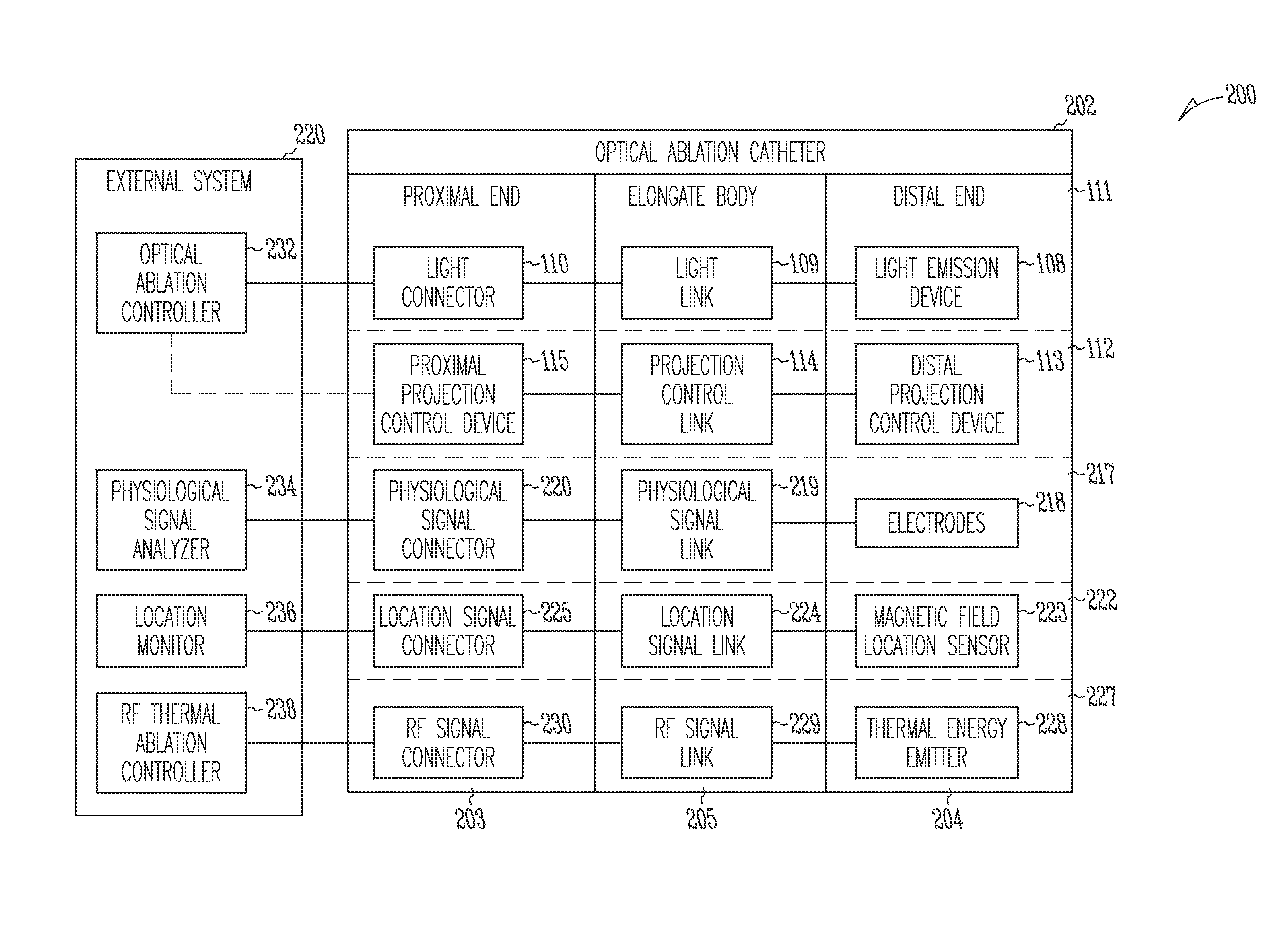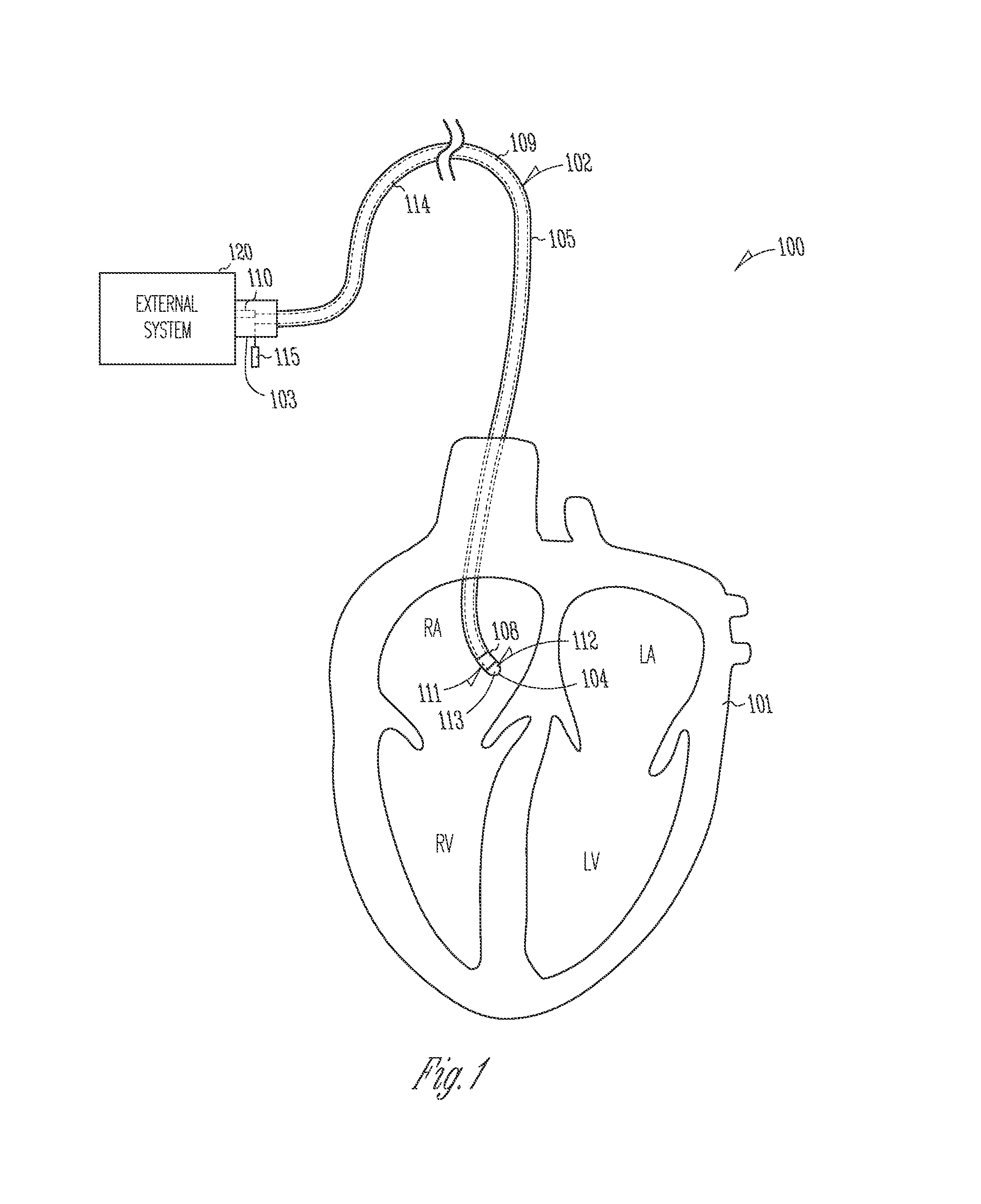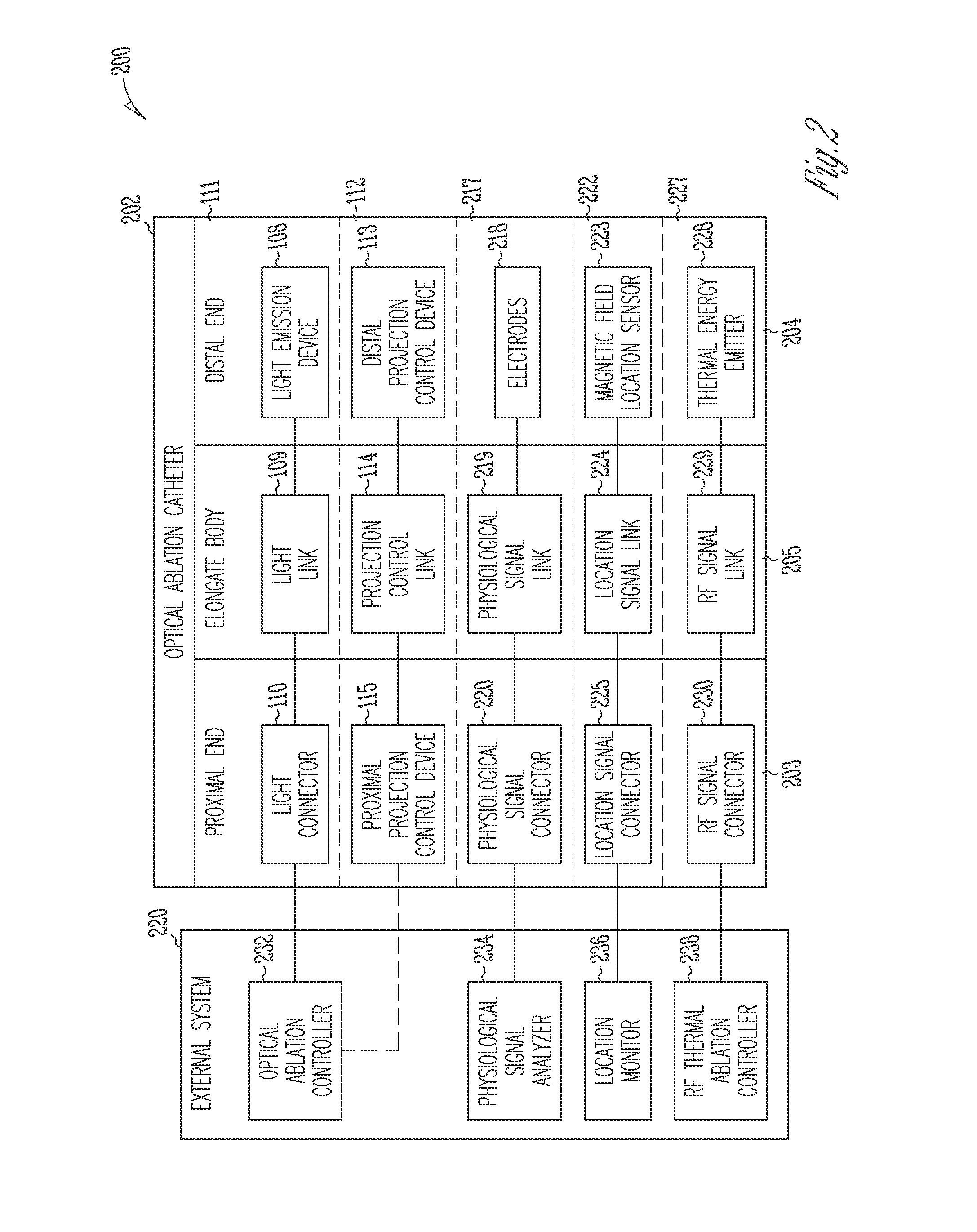Systems and devices for photoablation
a technology of photoablation and system, applied in the field of ablative therapy, can solve the problems of serious morbidity and mortality, rapid and irregular atrial activity, and unsatisfactory pharmacological and device therapies for treating af, and achieve the effect of blocking photolysis
- Summary
- Abstract
- Description
- Claims
- Application Information
AI Technical Summary
Benefits of technology
Problems solved by technology
Method used
Image
Examples
Embodiment Construction
Definitions
[0019]By “nucleic acid”, “oligonucleotide”, and “polynucleotide” or grammatical equivalents herein means at least two nucleotides covalently linked together.
[0020]“Recombinant,” as applied to a polynucleotide, means that the polynucleotide is the product of various combinations of cloning, restriction and / or ligation steps, and other procedures that result in a construct that is distinct from a polynucleotide found in nature. Recombinant as applied to a protein means that the protein is the product of expression of a recombinant polynucleotide.
[0021]“In vivo” gene / protein delivery, gene / protein transfer, gene / protein therapy and the like as used herein, are terms referring to the introduction of an exogenous (isolated) polynucleotide or protein directly into the body of an organism, such as a human or non-human mammal, whereby the exogenous polynucleotide or protein is introduced to a cell of such organism in vivo.
[0022]The term “corresponds to” is used herein to mean tha...
PUM
 Login to View More
Login to View More Abstract
Description
Claims
Application Information
 Login to View More
Login to View More - R&D
- Intellectual Property
- Life Sciences
- Materials
- Tech Scout
- Unparalleled Data Quality
- Higher Quality Content
- 60% Fewer Hallucinations
Browse by: Latest US Patents, China's latest patents, Technical Efficacy Thesaurus, Application Domain, Technology Topic, Popular Technical Reports.
© 2025 PatSnap. All rights reserved.Legal|Privacy policy|Modern Slavery Act Transparency Statement|Sitemap|About US| Contact US: help@patsnap.com



